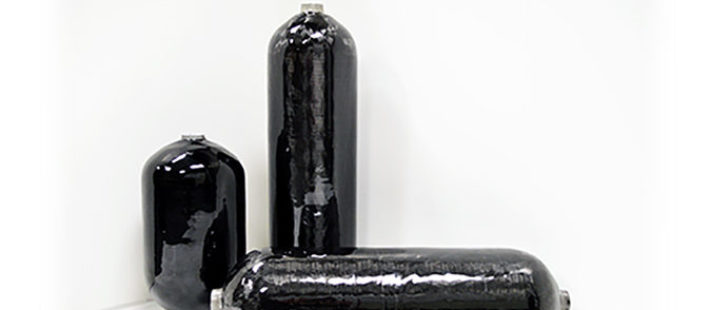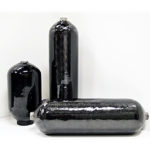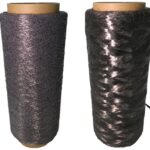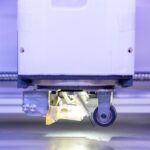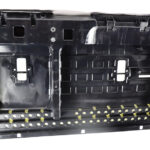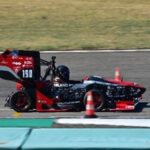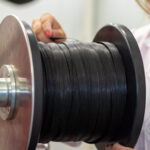Fuel Cell Electric Vehicles (FCEV) have a longer range and still feature all performance benefits of the electric powertrain. But the technology is still young and has to master some challenges. From a composites’ point of view, the significant amount of fibres needed for the hydrogen storage vessel, is a particular one. Cevotec engineers tried to find a solution: they designed a system to save 20% of the time, material and cost to build composites-based high-pressure vessels.
«The automotive industry has invested billions in fuel cell electric vehicles, but only very few cars are on our streets yet. One of the larger challenges is to efficiently and safely store hydrogen in the vehicle», says Thorsten Groene, CEO of Munich-based Fibre Patch Placement specialist Fuel Cell Electric Vehicles. «There is working pressure of up to 700 bar in the tanks, which translate into approx. 10 kg of carbon fibre for 1 kg hydrogen storage – a very high ratio».
Manufacturers are interested in using less of the expensive fibres to reduce the vessel’s weight and cost. «Wrapping endless fibres around the liner is best for the cylindrical part», says Dr Neven Majic, Executive VP of Cevotec. «But filament winding at the domes means redundant material on the cylindrical part – which translates into excess weight and cost of the final product». Cevotec’s solution is to apply carbon fibre patches in the dome areas, using the same material, just in patch form. «The patches are designed to exactly cover the areas causing problems in filament winding», explains Majic. With patch reinforcements on the liner domes in a first step, the patched liners are passed over to the filament winding process, which subsequently needs less material and production time for the dome areas.
Patching of the domes is done by Cevotec’s SAMBA Series production systems. «The Fibre Patch Placement technology cuts patches from fibre material and places them individually on positions calculated by CAE software ARTIST STUDIO», continues Majic. One FPP system can reinforce vessels for several winding machines. Manufacturers can realise at least 20% material and cycle time savings.
By consequently applying Fibre Patch Placement technology to today’s composite manufacturing challenges, Cevotec supports the advancement of composites for a green mobility revolution. Applications areas for FPP also include many components in aerospace and new urban air mobility, all of which are currently produced manually. The Munich-based FPP specialist has conceptualised a range of production cell configurations to match the manufacturing process to the different applications. Material efficiency and cost savings of 20% – 60% are typical benefits for manufacturers switching from manual lay-up to Fibre Patch Placement technology.
Source: NetComposites


